Jamey Houle, director of Sport Psychology and Wellness Services for Ohio State Athletics, talks with an athletic trainer.
(Photo by Corey Wilson)
Buckeye innovation elevates the whole athlete
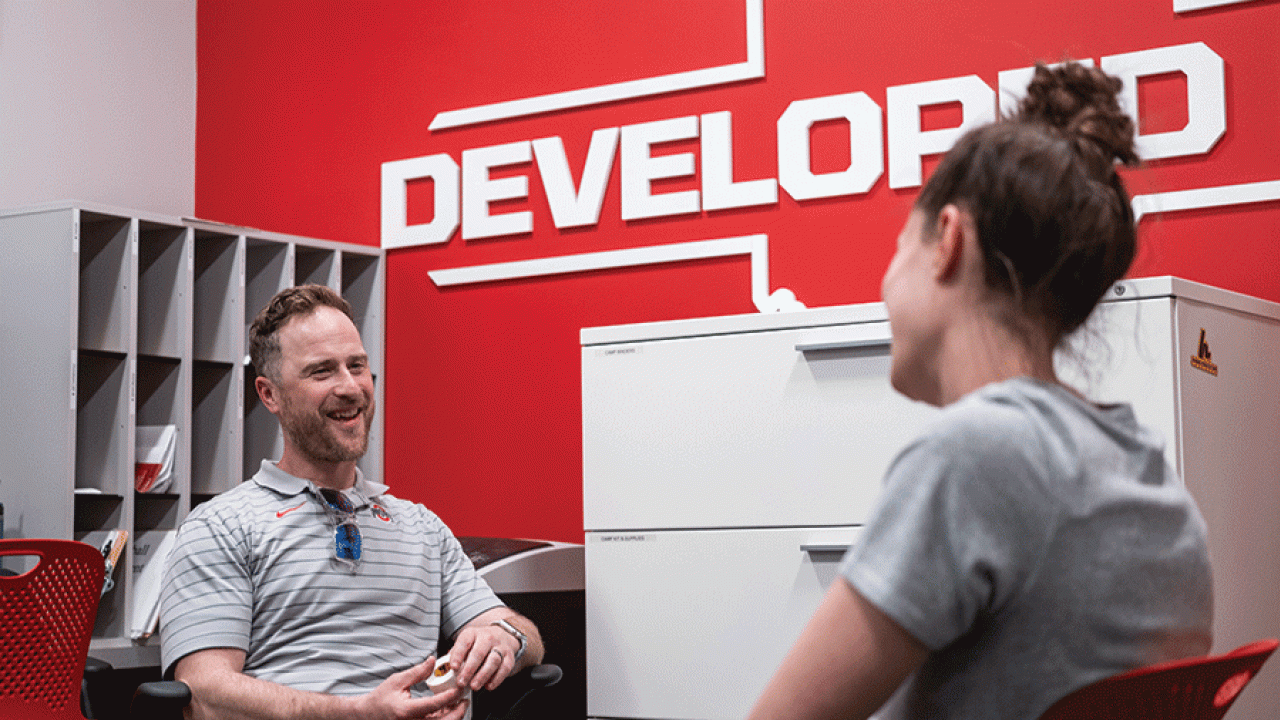
Growing up, Alessandra Flevares didn’t know the first thing about rowing. But when she left her hometown of Warren, Ohio, for The Ohio State University in 2022, Flevares learned that the women’s rowing team welcomes walk-on athletes who want to learn a new sport. She tried out and joined Ohio State Crew as a coxswain — the person who navigates and steers from the front of the boat.
“I like to think of it as a mini-coach in the boat,” Flevares says. “I've always been small, so the role is made for me. And I love talking. I did speech and debate in high school, and that has helped with communicating clearly and quickly.”
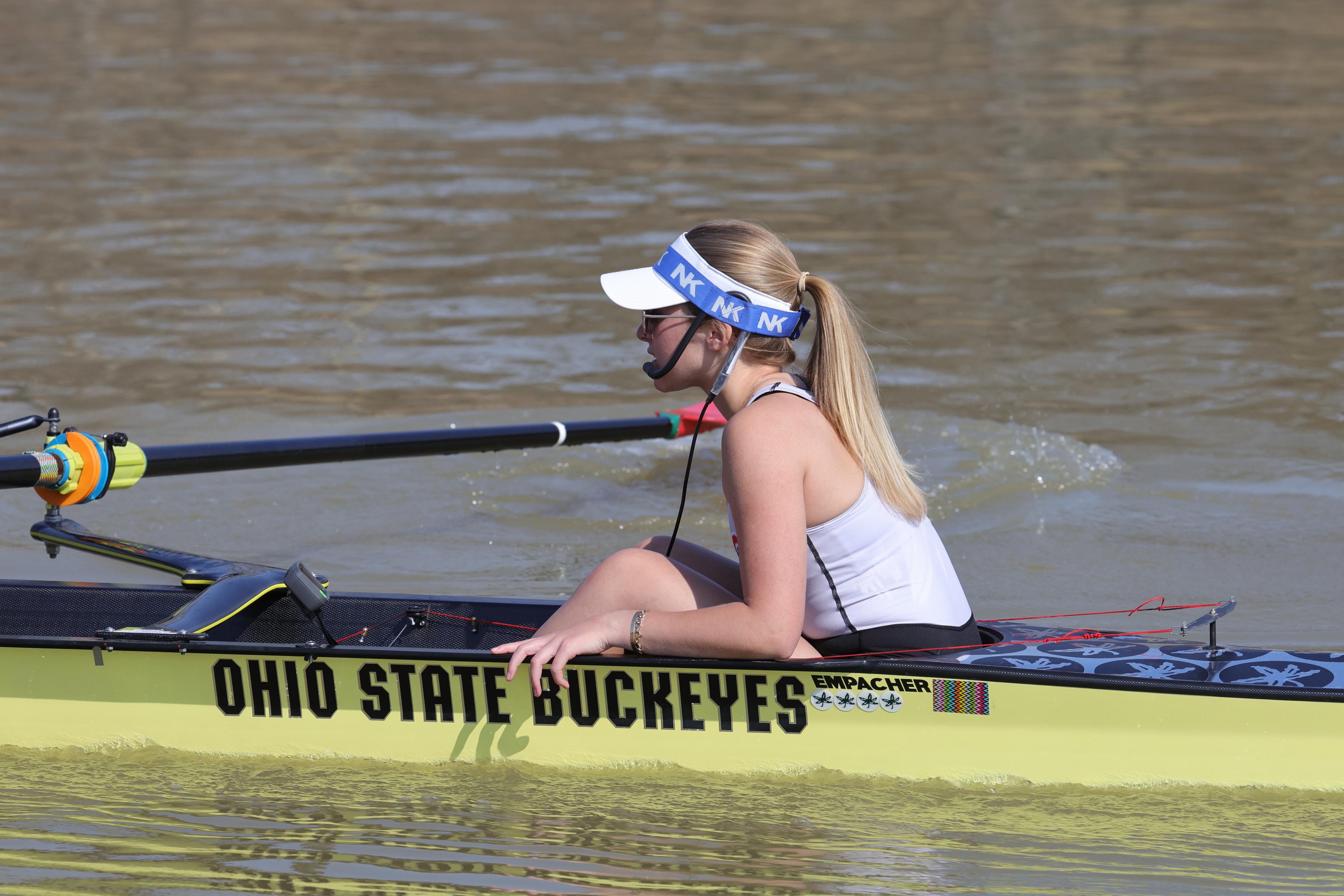
Flevares was competing as a Division 1 athlete — a huge honor — but it wasn’t smooth sailing. Previously, in high school, Flevares says she struggled with her mental health and self-harmed. Though she made steady progress during her first semester at Ohio State, those challenges resurfaced in the spring.
“I was trying to navigate how to be a student-athlete, and I also found myself mixed up with some not great friends. Nothing was going well. I went home for Christmas, and when I came back, I was in the worst depressive period of my life,” she says. “I felt awful all the time, and I started self-harming again. I needed to talk to someone.”
One of Flevares’ coaches referred her to SPAWS — Sport Psychology and Wellness Services, an interdisciplinary team committed to enhancing the mental wellness of student-athletes on and off the field. Flevares began seeing a SPAWS counselor weekly, and the sessions made a big difference.
“Having someone validate those feelings and help you walk through them is genuinely life changing. I now have the words to describe all those feelings,” she says. “If I didn't have SPAWS during that time, I don’t know what I would have done. I don't think I would still be on the team. I might not still be in school. I might not even be here today.”
Flevares is now in her final season with the Ohio State rowing team. She’ll graduate this summer with a degree in psychology, and she still visits SPAWS twice a month to see Sam Davis, PhD, a sport psychologist who came to Ohio State in 2023 for a postdoctoral fellowship thanks to funding from the Mangurian Foundation during Time and Change: The Ohio State Campaign.
The Mangurian Foundation, which is based in Fort Lauderdale, Florida, made a $10 million gift to Ohio State in 2020, a portion of which supports Ohio State Athletics’ health and wellness initiatives for student-athletes. That investment enabled SPAWS to grow from three people to a team of nine. “The Mangurian Foundation has helped us train, develop and now hire an interdisciplinary team. We’re collaborating across campus,” says Jamey Houle, PhD, ABPP, director of Sport Psychology and Wellness Services for Ohio State Athletics and a former All-American gymnast who helped the Buckeyes win the 2001 NCAA championship.
Some of that campus-wide collaboration happens with Josh Hagen, PhD, faculty director of the Human Performance Collaborative. “Jamey’s athlete wellness centers are phenomenal and one-of-a-kind,” says Hagen, who focuses much of his team’s work on recovery, both mental and physical. “SPAWS is truly recovering the whole athlete.”
Taking a holistic approach means Ohio State sport scientists are collecting hundreds of thousands of data points every day. “Ohio State Athletics takes amazing care of student-athletes, and at the same time we’re able to be on the cutting edge of science to ensure our student-athletes have the absolute best,” Hagen says.
That research emphasis is key to the mission of the Mangurian Foundation. “We are excited to support collaborative, innovative research and purpose-driven programming that benefits Ohio State student-athletes and changes lives,” says Stephen Mehallis, president of the Mangurian Foundation.
While the work of Houle, Hagen and others is crucial for the mental wellness, recovery and physical performance of Ohio State’s student-athletes, the benefits aren’t limited to athletics. “We’re currently researching and developing these technologies for the military and first-responder communities who endure tremendous amounts of stress,” Hagen says. “There are so many populations who can benefit from this research.”
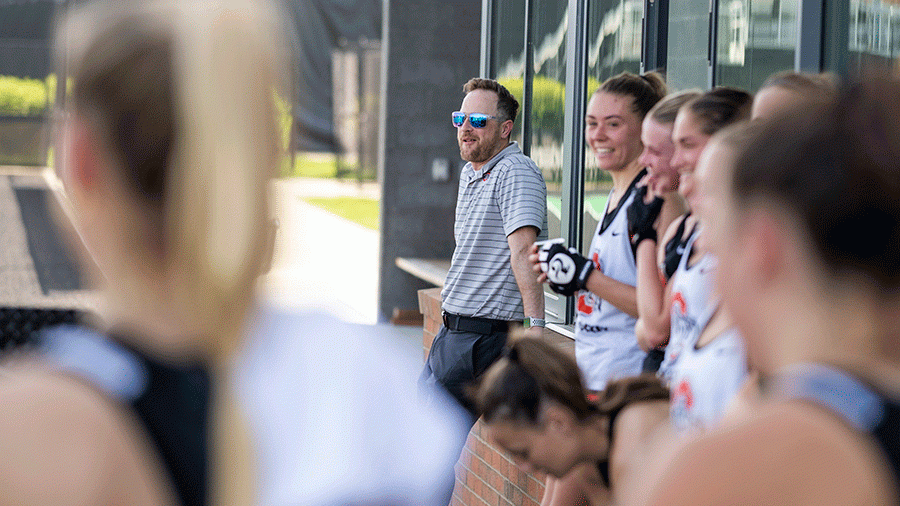
Linking mental health and sports performance
In high school, Houle thought sport psychology was a bunch of nonsense. But after winning the Junior Olympic National Championship in gymnastics in 1998, Houle went through a debilitating slump. “I totally crumbled and choked,” he says.
To get to the bottom of the issue, Houle “got dragged kicking and screaming” to a sport psychologist. He initially kept the sessions a secret from his teammates, but the counseling made all the difference. “The biggest thing for me was that I was allowed to make mistakes and have a bad day, even though my whole sport was about perfection,” Houle says. “It's basically self-compassion. It's forgiveness, which is tied to resilience. My ability to forgive myself for having a bad day on the pommel horse allowed me to move forward way faster than before.”
Houle came back the next year and won another national championship. “My sport psychologist was the first person I called when I won,” he says. “I said, ‘We did it.’”
Houle committed to Ohio State knowing he wanted to become a sport psychologist and make a difference in the lives of student-athletes, paying forward his own experience. When he got to campus, Houle connected with longtime Ohio State sport psychologist Jen Carter and asked, “How do I do what you do?”
Houle’s path took him to Springfield College in Massachusetts for his master’s and Auburn University for his PhD. He returned to Columbus in 2016 and launched SPAWS in 2019, and in the years since its founding, Ohio State has jumped to the forefront of research linking mental health with sports performance.
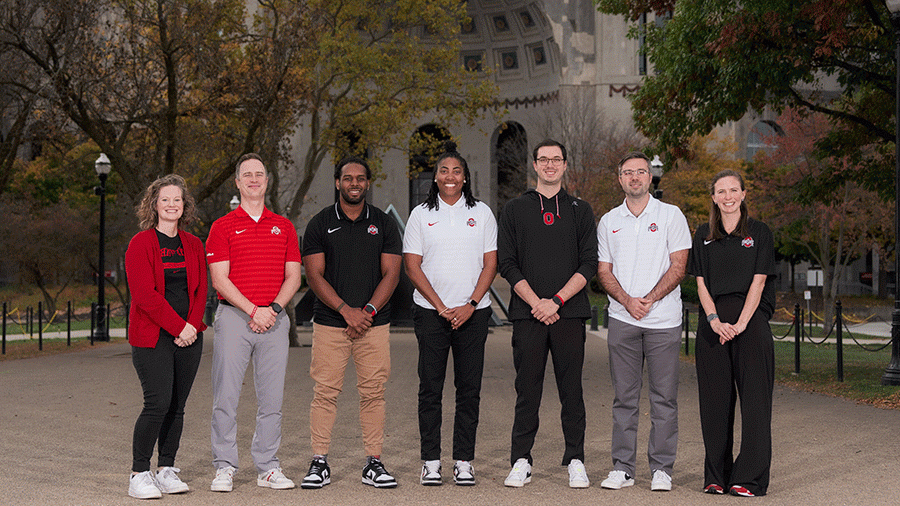
Sam Davis, who transitioned from a Mangurian Foundation-funded postdoc role to a full-time faculty position in 2024, is developing the use of a tool called the CAT-MH. “It’s designed to be a more adaptive and precise measure of mental health,” Davis says. Instead of a standard response form with static questions, the CAT-MH adapts based on answers to previous questions.
“Mental health is a nuanced experience. It’s not as simple as checking a series of boxes,” Davis says. “Depression has nine different symptom experiences, so the odds that you’re sitting across from somebody with the same experience of depression are very low.”
Houle sees unlimited potential in the CAT-MH’s ability to tie mental health measurements to performance data. “What if there’s a baseball player whose force plate data, which measures things like power and balance, has declined in such a way that is indicative of mental health concerns? The athletic trainer or the strength and conditioning coach can say, ‘Hey, sometimes people who fall within the range of your performance data have other things going on in their life affecting their performance. SPAWS is here to chat with you about what's going on,’” Houle says. “There is a potential to identify somebody who might never come to SPAWS otherwise through something like force plate data.”
“The CAT-MH project feels like a big step forward in demonstrating that what we do has science behind it,” Davis says. “There are numbers we're paying attention to that might cue us into something going on.”
Sydney Mack also recently transitioned to a full-time position after coming to SPAWS as a social work intern funded by the Mangurian Foundation. Several other SPAWS team members are former college athletes, enabling them to speak from personal experience. Houle, for example, says his tenure as an Ohio State gymnast gives him credibility with student-athletes and allows him to empathize with them.
“I get what it feels like to wear a Block O on your chest. I embrace the fact that you come here to be the very best. This is not a school where it's acceptable to be mediocre,” Houle says. “That’s a unique pressure.”
Thanks to the Mangurian Foundation, Ohio State is building a network of nationwide talent in the field of sport psychology. Former SPAWS postdoctoral fellows are now directors at Power Four schools like Clemson University and University of Kansas. “We’re not trying to send out regular clinicians,” Houle says. “We’re trying to build leaders in the field.”
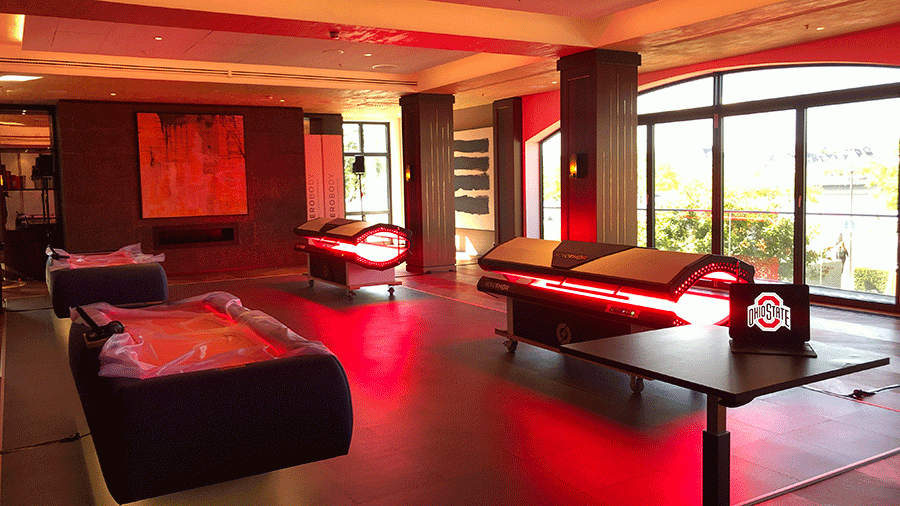
A holistic approach to recovery science
About 10 years ago, Josh Hagen was sitting at Wright-Patterson Air Force Base, an hour or so from Columbus. He couldn’t stop thinking about the potential connections between his human performance research with the military and the similar work undoubtedly occurring at Ohio State’s Department of Athletics.
“We were trying to optimize elite, high-performance individuals, and I thought, ‘Who’s doing that better than anyone in the world? It’s Ohio State football,’” says Hagen, who then cold-called Doug Calland, head of athletic training for Ohio State Athletics, and asked if they could meet. “I thought they knew the answers to all the questions, and they thought the military knew all the answers. We decided we didn’t have to figure this stuff out in isolation. We could do it together.’”
The Mangurian Foundation’s crucial early investments in sport science at Ohio State helped to make that collaboration a reality. Hagen is now director of Ohio State’s Human Performance Collaborative (HPC), with dual research groups — one at the university and another at Wright-Patterson’s Air Force Research Laboratory. While both entities use similar technologies, athletics provides a great test environment for high performers.
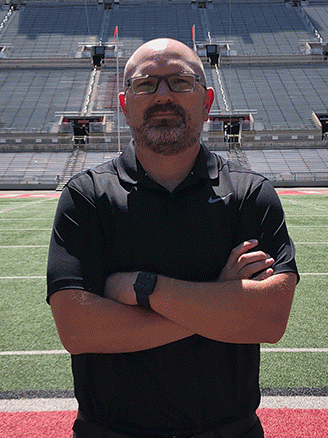
“In sports, I have discrete outcomes, wins and losses. I have scores and statistics. In the military, I don’t have that,” Hagen says. “But in both scenarios, it’s a human body undergoing a lot of physical and emotional stress. How do we measure that? How do we understand it? And how does that relate to performance?”
To find the answers to those questions, Ohio State created the Performance Innovation Team (PIT) to facilitate communication and collaboration between the HPC and athletics. “There tends to be a disconnect between academia and athletics, which speak different languages and work at different speeds,” Hagen says. “With PIT, we can answer questions in real time and understand the fast pace of athletics. On the research side, we listen to what the athletes need, and on the sports side, they learn how our work will benefit their athletes. That’s the magic of the team: We speak that language together.”
For Ohio State’s elite student-athletes, performance stress is ever present. “So, what can we do?” Hagen says. “We can out-recover that stress.”
Historically, recovery has focused on tools like cold tanks and saunas so that athletes’ muscles can physically recover. Together, PIT, HPC and SPAWS take a holistic approach that includes student-athletes’ mental and emotional health. That emphasis led to saltwater float tanks and sensory deprivation — recovery tools that Hagen brought from the Department of Defense to Mickey Marotti, Ohio State’s assistant athletic director for football sports performance.
“Sensory deprivation in float tanks is great because it takes all the pressure off your joints and bones and muscles, but it also gets you in this deep, meditative state by taking away all of the sensory inputs from your busy mind,” Hagen says. “This is an amazing combination of physical and mental recovery for the student-athlete.”
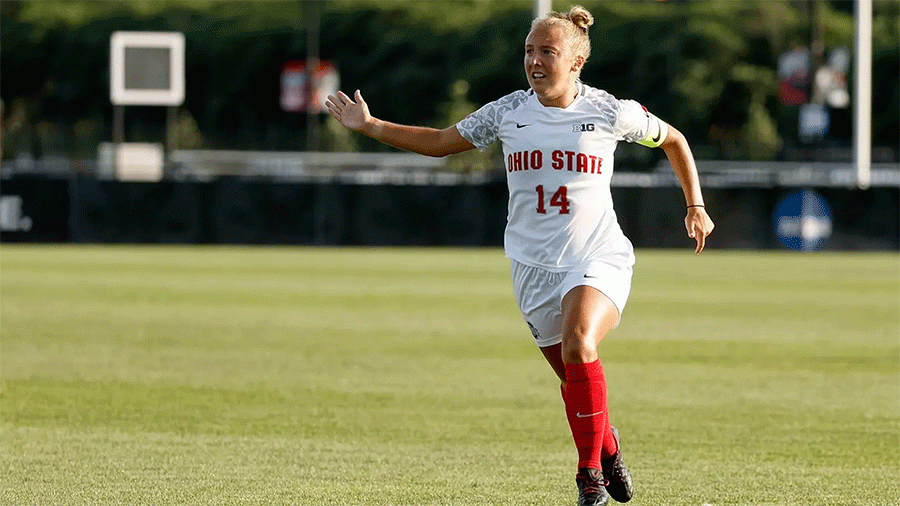
Through the support of the Mangurian Foundation, Emaly Vatne — former captain of the Ohio State women’s soccer team, second-year PhD student in kinesiology and a member of the HPC and PIT — is leading the recovery science efforts at Ohio State. Vatne was recently the first author on a scientific publication that analyzed 2,500 float sessions, which showed hugely positive benefits for the athletes. “And the Mangurian Foundation provided the investments to help facilitate all that research,” Hagen says.
Hagen says the expertise of someone like Vatne matters more than the tools and gadgets. “It’s not always about buying the thing,” he says. “It’s about having people who truly understand the athlete, their needs and what their data means.”
Looking ahead, Hagen is excited about the HPC’s potential for global impact. “If we see stress markers and blood pressure go down in D1 athletes, then it’s probably good for everybody,” says Hagen, who recently acted on that hunch after a conversation with a trauma surgeon. “She told me what her day was like, and it’s so physical. During an eight-hour surgery, she’s on her feet, dehydrated, sweating. I said, ‘Holy cow, who’s your strength coach? You’re an athlete. You should be treated like one.’”
Hagen calls that project The Surgeon Athlete, and the HPC is now working on similar projects with emergency room doctors and first responders. Perhaps personalized recovery options for other physically demanding occupations will follow. Building on support from the Mangurian Foundation, Ohio State’s Human Performance Collaborative is uniquely suited to solving such problems.